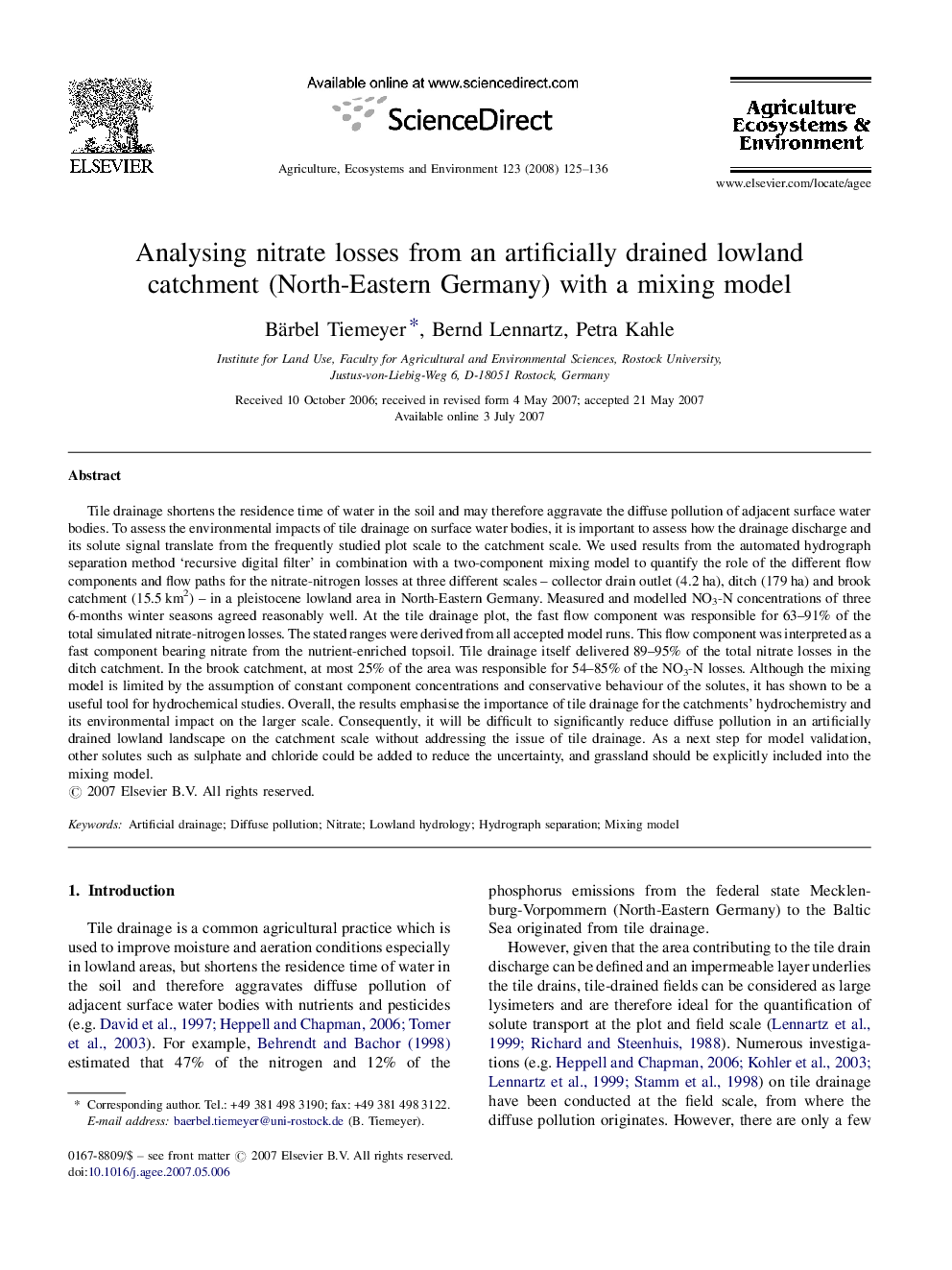| کد مقاله | کد نشریه | سال انتشار | مقاله انگلیسی | نسخه تمام متن |
|---|---|---|---|---|
| 2415768 | 1552139 | 2008 | 12 صفحه PDF | دانلود رایگان |
عنوان انگلیسی مقاله ISI
Analysing nitrate losses from an artificially drained lowland catchment (North-Eastern Germany) with a mixing model
دانلود مقاله + سفارش ترجمه
دانلود مقاله ISI انگلیسی
رایگان برای ایرانیان
کلمات کلیدی
موضوعات مرتبط
علوم زیستی و بیوفناوری
علوم کشاورزی و بیولوژیک
علوم زراعت و اصلاح نباتات
پیش نمایش صفحه اول مقاله

چکیده انگلیسی
Tile drainage shortens the residence time of water in the soil and may therefore aggravate the diffuse pollution of adjacent surface water bodies. To assess the environmental impacts of tile drainage on surface water bodies, it is important to assess how the drainage discharge and its solute signal translate from the frequently studied plot scale to the catchment scale. We used results from the automated hydrograph separation method 'recursive digital filter' in combination with a two-component mixing model to quantify the role of the different flow components and flow paths for the nitrate-nitrogen losses at three different scales - collector drain outlet (4.2Â ha), ditch (179Â ha) and brook catchment (15.5Â km2) - in a pleistocene lowland area in North-Eastern Germany. Measured and modelled NO3-N concentrations of three 6-months winter seasons agreed reasonably well. At the tile drainage plot, the fast flow component was responsible for 63-91% of the total simulated nitrate-nitrogen losses. The stated ranges were derived from all accepted model runs. This flow component was interpreted as a fast component bearing nitrate from the nutrient-enriched topsoil. Tile drainage itself delivered 89-95% of the total nitrate losses in the ditch catchment. In the brook catchment, at most 25% of the area was responsible for 54-85% of the NO3-N losses. Although the mixing model is limited by the assumption of constant component concentrations and conservative behaviour of the solutes, it has shown to be a useful tool for hydrochemical studies. Overall, the results emphasise the importance of tile drainage for the catchments' hydrochemistry and its environmental impact on the larger scale. Consequently, it will be difficult to significantly reduce diffuse pollution in an artificially drained lowland landscape on the catchment scale without addressing the issue of tile drainage. As a next step for model validation, other solutes such as sulphate and chloride could be added to reduce the uncertainty, and grassland should be explicitly included into the mixing model.
ناشر
Database: Elsevier - ScienceDirect (ساینس دایرکت)
Journal: Agriculture, Ecosystems & Environment - Volume 123, Issues 1â3, January 2008, Pages 125-136
Journal: Agriculture, Ecosystems & Environment - Volume 123, Issues 1â3, January 2008, Pages 125-136
نویسندگان
Bärbel Tiemeyer, Bernd Lennartz, Petra Kahle,